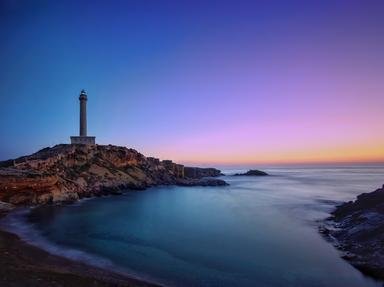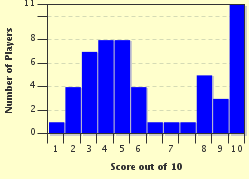Quiz Answer Key and Fun Facts
1. On October 29, 1628 the Batavia set sail on its maiden voyage, in its hold chests full of silver coins and jewelry. Sailing in convoy from Texel in the Netherlands, the destination was Batavia in the Dutch East Indies. What is the current name of the city that was once called Batavia?
2. In command of the Batavia was upper-merchant Francisco Pelsaert. Adriaen Jacobsz, his enemy from an earlier voyage to the Dutch East Indies, was the skipper. Including Pelsaert and Jacobsz, how many people were aboard the Batavia when it left Texel?
3. Nearly six months later, in April 1629, the Batavia reached the Cape of Good Hope. By then the relation between Pelsaert and Jacobsz had gotten worse, because both men were after the same woman, Lucretia Jansz (also called Lady Lucretia van der Meylen). After another incident at the Cape of Good Hope - Jacobsz was publicly reprimanded for getting himself into a fight aboard another ship from the Batavia's convoy - the skipper sought revenge. What was NOT part of his plans?
4. Jacobsz never got to act out all of his plans for revenge however, because on June 4, 1629 the Batavia ran aground and sank on the Houtman Abrolhos. This reef formation is located about 60 km off the coast of which country?
5. Luckily for the castaways from the Batavia, there was a group of islands nearby. Although about 40 of the castaways drowned, most of them made it to two of the largest islands in the Batavia's two small boats. There was a severe lack of water however, so soon a group of about 50 high officers and passengers - among them both the commander and the skipper - took both boats and went on a search for water. They were not very successful and instead of returning to their island they decided to head for Batavia, a mere 2500 (!) km away. Did they actually get there?
6. Meanwhile about 70 crew members were still stuck on the wreck. When ordered by Pelsaert to rescue the Batavia's treasures, they had refused and had a go at the ship's wine instead. Consequently they had been left behind drunk on what little was left of the Batavia. Among them was Jeronimus Cornelisz, a man who would play the lead in the events that lay ahead. What was his occupation?
7. A lot of castaways had died of thirst by the time Jeronimus Cornelisz finally arrived on the islands. The absence of Pelsaert and Jacobsz made Cornelisz the most senior man around, so when he sent a group of soldiers without weapons to nearby High Island to "search for water" they obeyed. With the soldiers out of the way Cornelisz began his mutiny. He convinced a group of men that their only chance of survival was to kill off everyone else on the island. If Pelsaert returned, they'd capture his ship and start a life of piracy. Which of the following atrocities was NOT committed by the mutineers?
8. When the mutineers noticed a smoke signal coming from High Island, they realised the soldiers were still alive. Several attacks, negotiations and bribery attempts later, the group of soldiers - warned by some escapees from the mutineers' island - still stood firm. With homemade weapons they had even managed to imprison Cornelisz! In the middle of yet another battle with the mutineers, the rescue ship the Saerdam appeared on the horizon. Among the few soldiers who went to warn those aboard the Saerdam of the mutiny was the leader of the soldiers on High Island. What was his name?
9. More than three months after the sinking of the Batavia the violence had finally come to an end. About 120 people had been massacred. The mutineers were captured relatively easily and brought aboard the Saerdam. The most dangerous of them were tried and executed on the spot, because of the risk that they'd try to take over command of the Saerdam on the way back to Batavia. Jeronimus Cornelisz was one of them. Before he was hanged however, he had to undergo severe physical punishment. What was done to him?
10. In 1963 the wreck of the Batavia was found near the Wallabi Islands by a fisherman. The excavated artifacts are on display in two Australian museums. From 1985 to 1995 a replica of the Batavia was built in the Netherlands. This new Batavia sailed to Sydney in 2000, but has now returned to its home port, where it can be visited by the public. In which city can you find the Batavia?
Source: Author
Leau
This quiz was reviewed by FunTrivia editor
bloomsby before going online.
Any errors found in FunTrivia content are routinely corrected through our feedback system.

